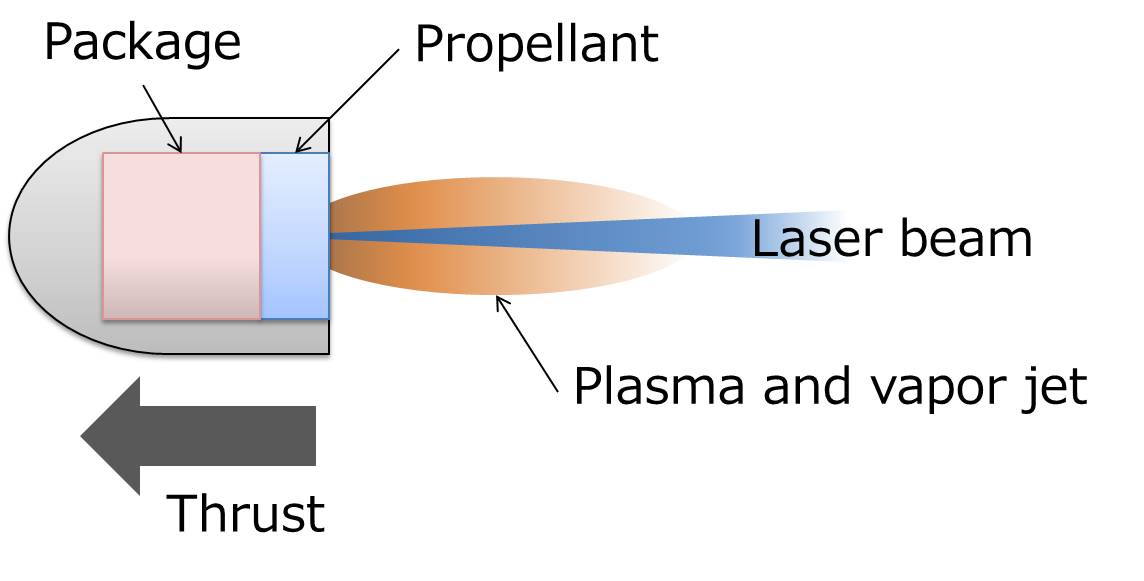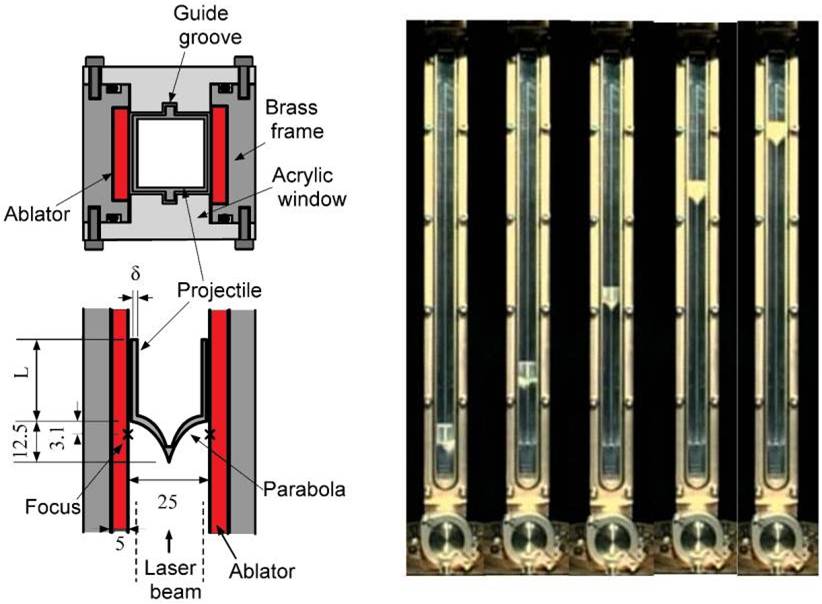About
Laser ablation propulsion is a next generation spacecraft propulsion method. Thrust is generated by beaming laser to propellant from a distant position.
Our study had investigated thrust generation law by using a high speed camera and had demonstrated an original launch method.
Currently, the focus is on impulse characteristics of repetition pulse irradiation as repetitive irradiation is expected to be needed in practical use.

Fig.1 Principle of Laser Propulsion |
Laser Propulsion
Laser ablation is a phenomenon that a solid material is changed to gas or plasma by laser irradiation. Laser ablation propulsion is a next generation propulsion method using the ablation jet as thrust (Fig. 1). Since energy is partly supplied by laser beaming from a distant position, there is a possibility of reducing loaded propellant. Because of these merits it has, laser propulsion is expected to be applied to space debris re-orbiting and attitude control of satellite.
Theory of thrust generation
Laser ablation is a phenomenon that a solid material is changed to gas or plasma by laser irradiation. Momentum generation theory has been investigated by nanosecond scale visualization using a high speed camera (fig. 2). As a result, thrust generation theory has been verified. This is a theory that ablation is generated just after absorption of laser light and successive impulse is generated by expansion. In addition, a lot of phenomenons have been unveiled. For example, laser energy efficiency is decreased in atmosphere by plasma shielding.

Fig.2 Schlieren Image(TEO CO2 Laser,polyacetal,1000kfps)
How to launch without mounted fuel

Fig.3 Flying test in Tube |
Today, percentage of propellant in a spacecraft is extremely large and it is expected to decreased its ratio. As an ultimate model to pursue this object, propulsion method that propellant is completely apart from spacecraft is developed and launch demonstration has been conducted (fig. 3). The projectile is sat into the tube which is stood vertically from ground and ablator is placed at the side of the tube. Laser irradiated from the bottom is reflected at lower part of the projectile which has parabolic shape and focused on the ablator. The ablator wall is ablated by laser irradiation. By doing so, the projectile obtains thrust from pressure rise in the tube. As a result, the energy efficiency is extremely improved compare with a conventional method whose mount propellant is on the projectile.
How to get large thrust from limited energy source

Fig.4 Experimental Setup |
The relation between laser irradiation method and impulse has yet to be clear. Therefore, laser is irradiated in various pulse conditions and impulse generated in these experiments are investigated(fig. 4). Heretofore, original impulse balance was developed in order to take accurate measurement of impulse generated by repeated irradiation of pulsed laser. This impulse balance is displaced by ablation when laser beam is irradiated to the target installed on the edge of the impulse balance. As long as impulse balance would not surpass quarter period, total impulse is able to be measured.




